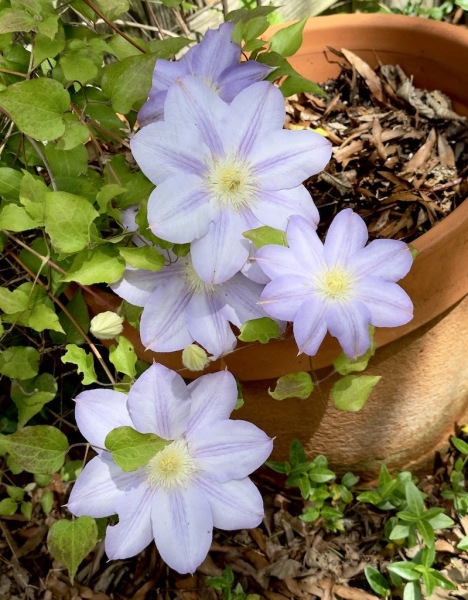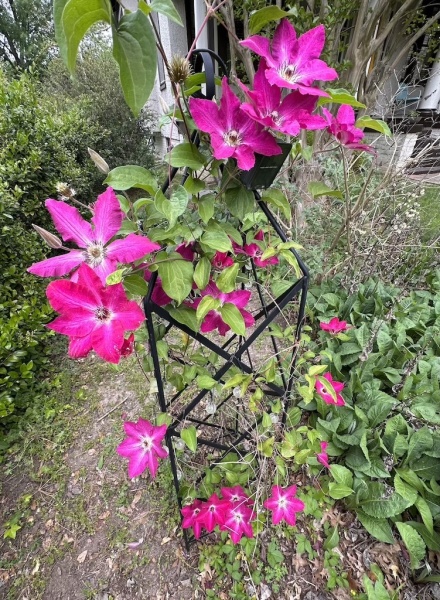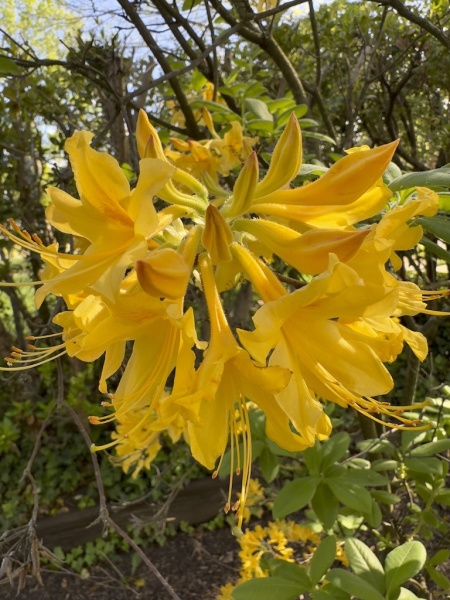Garden Update
25 Apr 2023 17:58I had thought that Creeping Phlox was probably an Asian origin plant. And I was really, really pleased to see the native Strawberry Clearwing Moth feeding on them, and indeed they are native to the US! I like to plant native plants to support native pollinators. I have seen this moth a couple times lately --



None of the rest of these are native plants though -- a few Dutch Iris outside that I brought in --


And I have some Clematis vines that have done very well this year!



I planted this years ago, and since then I had THOUGHT this might be a native azalea because it is deciduous. But I'm learning towards this being a Rhododendron 'luteum'-- a European native. If true, the pollen in this could be used by bees to make 'Mad Honey' -- honey that is not good for people! I am not sure -- I bought this at a big box store many, many years ago and have long ago lost the tag that came with it.




None of the rest of these are native plants though -- a few Dutch Iris outside that I brought in --


And I have some Clematis vines that have done very well this year!



I planted this years ago, and since then I had THOUGHT this might be a native azalea because it is deciduous. But I'm learning towards this being a Rhododendron 'luteum'-- a European native. If true, the pollen in this could be used by bees to make 'Mad Honey' -- honey that is not good for people! I am not sure -- I bought this at a big box store many, many years ago and have long ago lost the tag that came with it.
